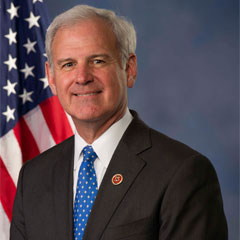
Passover and Easter came and went with all of us still in extreme social distancing. There were online Seders. Many of us missed being in church on Easter Day for the first time in our lives. Easter egg hunts and parties were cancelled, and parents conducted their own hunts with just their children. The big Easter brunches and dinners which have been the tradition for so many were forgone, postponed, or just very small. And too many of us were literally alone, all alone.
The experts tell us our peak for the disease in Alabama is about a week away. At that point the number of new cases and deaths will hit their highest point, plateau, and then, mercifully, begin to come down. How long it takes for the rate of new cases and deaths to come down on a sustained basis is still unclear, but that time is getting nearer.
So, it is appropriate for President Trump to convene a group of experts to ask the question, when and how do we begin to relax the extreme social distancing we have been under? Public health is the main consideration, but the long-term health of our society and economy is also important. I am grateful the President has started the conversation, even in the face of never-ending criticism from the news media.
The biggest problem we face in this discussion is the lack of solid data. We haven’t had enough testing to really understand the course of the disease and our national numbers have been largely driven by the virus’ tragic toll in the New York metro area where we have experienced over half of all of the nation’s deaths, and where most of our national news media companies are headquartered. There’s no measure they have had to take there that could be characterized as going too far. Other places like New Orleans and Detroit have experienced similar outbreaks, but the New York experience has been the nation’s most extreme.
The lack of transparency in China, where the virus began, has been a hindrance. The CIA has warned us that Chinese government information on the virus is not to be trusted. So, the US, and the rest of the world, will have to use our own data to tell us what we can do and when we can do it.
Here in Alabama, we have been blessed to escape the worst of the disease. While one infected Alabamian, and certainly one death, is one too many, as I write this, around 3,300 Alabamans have been confirmed as having the disease, 400 have been or are hospitalized, 180 have been sent to the ICU, and around 90 have tragically died. The light in this dark news is that our case fatality rate is 2.9 percent, which is lower than the national average of 3.9 percent, and far lower than the world average of 6 percent. Alabama’s cases represent only about one half of one percent of all cases in the US. Moreover, of the over 21,000 Alabamians who have been tested, only 15 percent are coming back positive, which means 85 percent have tested negative for the disease. And remember, we are only testing the most at-risk people.
In our Congressional district, we have seen just under 500 cases and 13 deaths. Our case fatality rate here is a little less than the rest of the state.
Still, the peak hasn’t arrived here in Alabama, and even after it does, we will have more cases and deaths, just at a falling rate.
What to do?
First, we all need to stay safe, and protect ourselves by practicing recommended social distancing and good hygiene. We need to wash our hands thoroughly and frequently, clean and disinfect hard surfaces, and avoid touching our faces.
Second, our public health professionals will have to guide our understanding of where we are with the disease and where we need to go. Testing has ramped up, and will continue to do so, thus yielding a lot more data. I am grateful to Dr. Tony Fauci, the director of the National Institute of Allergy and Infectious Diseases, for his good counsel to the President and Congress, and for his willingness to spend so much time in seemingly endless briefings where he patiently answers individual Congress members’ questions. I am also grateful to Dr. Scott Harris, our State Health Officer, for his good work and willingness to spend time with me and others as we work through our Alabama response.
Third, it’s time to start the conversation about when and how we begin to relax extreme social distancing at the national, state, and local levels. America is the third most populous nation in the world with a continental footprint, including Alaska, and various islands like the state of Hawaii, and territories like Puerto Rico and the US Virgin Islands in the Caribbean, and Guam and American Samoa in the Pacific. We are a very diverse nation and that diversity is reflected in the diversity of experience with this disease. The decisions that must be made will by necessity differ from state to state, and from county to county in many states. One size fits all makes no sense.
Fourth, it is not just appropriate but essential that we take into account the effects of extreme social distancing on our society and economy. As I said in this column two weeks ago, Genesis tells us that God said it’s not good for humans to be alone. It hurts us sociologically and psychologically. And it has taken the US economy from being the strongest in 50 years with record-breaking unemployment, to losing 29 percent of our daily economic output in just one month, costing over 17 million people their jobs. That has never, ever happened before in America. And we did it, abruptly, to ourselves. Extreme social distancing is impoverishing millions in this country and we know their economic recovery won’t be easy or quick. The mental health and social pathology effects will be staggering. The longer extreme social distancing lasts, the worse all of this will be.
There is a balance to be struck here. President Trump has said this is the most difficult decision he has ever made. Short of going to war, that would be true for all our presidents. I know he will rely on Dr. Fauci and other national public health experts as he does so. Governor Ivey has very difficult decisions to make, which I know she will make with the close advice of Dr. Harris.
And we all have decisions to make. Will we let some of the inaccurate and overblown projections, and the blaring sensationalist national news media, panic us into irrationality? Or will we follow the public health experts’ guidance as we gradually reopen our society and our economy for the good of all?
